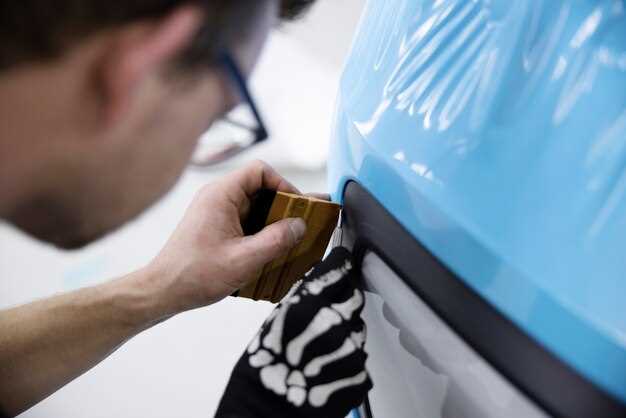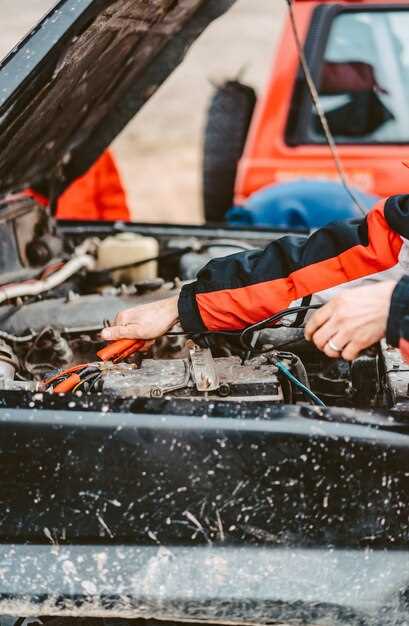
Rust is one of the most common adversaries for vehicle owners, threatening the integrity and appearance of cars, trucks, and SUVs alike. Exposure to moisture, salt, and varying weather conditions can accelerate the rusting process, leading to costly repairs and diminished resale value. Protective measures become essential to ensure the longevity and performance of your vehicle.
Understanding the factors that contribute to rust formation is the first step toward prevention. Vehicles are particularly susceptible in regions with harsh winters, where road salt is heavily used to combat ice and snow. Additionally, neglecting minor paint chips or scratches can lead to rust penetrating the metal beneath. Therefore, implementing a proactive approach to maintenance is crucial.
This article outlines the best practices for rust prevention, providing practical tips and methods that can be easily integrated into your vehicle care routine. From regular inspections to protective coatings, you’ll learn how to safeguard your investment and keep your vehicle looking new for years to come.
Regularly Wash and Wax Your Car

One of the most effective ways to prevent rust on your vehicle is by regularly washing and waxing it. Accumulation of dirt, salt, and other contaminants can lead to rust formation, especially in areas prone to moisture exposure. By washing your car frequently, you can remove these harmful substances before they cause any damage.
When washing your vehicle, pay special attention to the undercarriage and wheel wells, as these areas are often neglected and can trap moisture and debris. Use a pressure washer or a nozzle that can reach these spots effectively. A high-quality car soap recommended for automotive surfaces will help lift grime without damaging the paint.
After washing, applying a coat of wax is crucial. Wax acts as a protective barrier against moisture and environmental contaminants. It helps seal the paint and creates a hydrophobic surface, allowing water to bead off rather than sit on the metal parts of the car. Regular waxing, ideally every three months, will not only keep your vehicle looking shiny but also enhance its resistance to rust.
In addition, consider using specialized rustproofing products to further protect vulnerable areas of your vehicle. Combining regular washing and waxing with these products will significantly reduce the likelihood of rust development and prolong the lifespan of your car.
Inspect and Repair Paint Chips and Scratches
One of the most effective ways to prevent rust on your vehicle is to regularly inspect for paint chips and scratches. The paint on your car serves as a protective barrier against moisture and environmental elements. When this layer is compromised, the underlying metal becomes exposed, leading to potential corrosion.
Routine inspections should be part of your vehicle maintenance schedule. Look for any imperfections in the paintwork, particularly around high-wear areas such as door edges, wheel wells, and the roof. Pay attention to minor chips, as they can develop into more significant issues if left untreated.
If you identify any paint damage, it is crucial to address it promptly. Here is a step-by-step guide on how to effectively repair paint chips and scratches:
| Step | Description |
|---|---|
| 1 | Clean the Area: Use soap and water to remove dirt and debris from the affected area. Dry thoroughly. |
| 2 | Sand the Damaged Area: Lightly sand the chipped or scratched area with fine-grit sandpaper to create a smooth surface. Be careful not to damage the surrounding paint. |
| 3 | Apply Touch-Up Paint: Use a color-matched touch-up paint to fill in the chip or scratch. Apply in thin layers and allow each layer to dry before adding more. |
| 4 | Clear Coat Application: Once the touch-up paint is dry, apply a clear coat to protect the repair and blend it with the surrounding paint. |
| 5 | Polish the Area: After the clear coat has dried, gently polish the area to ensure a smooth finish that matches the rest of the vehicle. |
By maintaining the integrity of your vehicle’s paintwork, you can significantly reduce the risk of rust. Regular inspections, combined with timely repairs of chips and scratches, contribute to the long-term preservation of your vehicle’s aesthetics and structural integrity.
Apply Rust Inhibitors and Protective Coatings
One of the most effective methods to combat rust is the application of rust inhibitors and protective coatings. These products create a barrier between metal surfaces and moisture, significantly reducing the chance of oxidation.
Rust inhibitors are specially formulated chemicals that can be applied directly to metal surfaces. They work by either preventing moisture from contacting the metal or by providing a protective layer that inhibits the oxidation process. Many automotive enthusiasts recommend using a quality rust inhibitor during routine maintenance, particularly after washing or during seasonal changes.
Protective coatings, such as undercoating and paints designed for automotive use, can further enhance protection against rust. Undercoating products can be sprayed on the undercarriage of the vehicle, creating a durable shield against water, salt, and road debris. This is particularly crucial in regions where winter roads are treated with salt for de-icing, as these conditions can accelerate rust formation.
When selecting rust inhibitors and coatings, it’s essential to choose products that are compatible with your vehicle’s specific materials and finish. Application techniques may vary, with some products requiring a spray application while others can be brushed on. Always follow the manufacturer’s instructions for optimal results.
Regular inspections of the vehicle’s undercarriage and other prone areas, such as wheel wells and door panels, should be conducted to assess the need for additional layers of protection. Maintaining a clean surface before applying any inhibitor or coating will ensure better adhesion and performance.
Incorporating rust inhibitors and protective coatings into your vehicle maintenance routine can significantly extend the lifespan of your car’s body and parts. This proactive approach not only preserves the aesthetic appeal but also enhances the vehicle’s overall value.
Keep Drainage Channels Clear
Maintaining clear drainage channels is crucial for preventing rust on your vehicle. These channels are designed to allow water to escape from areas such as the undercarriage, wheel wells, and around windows. When debris such as leaves, dirt, and grime accumulate, they can block the flow of water, leading to retention and potential rust formation.
Regularly inspect the drainage channels to ensure they are free from obstruction. You can use a small brush or compressed air to clear out any clogs that may have formed. Pay special attention to drainage holes in the frame and body, as these areas are often overlooked.
Additionally, after heavy rain or snow, make it a habit to check the drainage channels. Water pooling in these areas can accelerate corrosion if not addressed promptly. Keep a maintenance log to track your inspections and cleanings, ensuring that any buildup is addressed before it becomes a significant issue.
By keeping drainage channels clear, you create an environment that minimizes moisture retention, significantly lowering the risk of rust development and prolonging the lifespan of your vehicle.
Store Your Vehicle in a Dry Environment
One of the most effective strategies to prevent rust on your vehicle is to ensure it is stored in a dry environment. Exposure to moisture is a primary cause of rust formation, as water can accumulate on the vehicle’s surface and in hidden areas.
Choose a garage or an enclosed space that is well-ventilated and protected from rain, snow, and humidity. Proper ventilation helps to reduce moisture buildup, creating an inhospitable environment for rust to thrive. If a garage isn’t an option, consider using a high-quality vehicle cover designed to repel water and allow moisture to escape, thus providing an extra layer of protection.
In addition to protecting your vehicle from direct exposure to precipitation, check for signs of leaks or water entry in your storage area. Ensure that windows and doors are sealed to prevent dampness from affecting your vehicle. Investing in a dehumidifier can be beneficial for enclosed spaces, maintaining low humidity levels and further safeguarding your vehicle from rust.
Lastly, regularly inspect your storage environment for any signs of mold or mildew, as these can also contribute to moisture-related issues. By keeping your vehicle in a dry setting, you significantly lower the risk of rust, extending its lifespan and maintaining its overall condition.
Monitor and Replace Worn Weather Stripping
Weather stripping plays a crucial role in protecting your vehicle from external elements. It prevents water, dirt, and debris from entering the cabin, thereby reducing the risk of rust formation. Regularly monitoring and replacing worn weather stripping can significantly enhance your vehicle’s longevity and appearance.
Here are the steps to effectively manage the weather stripping on your vehicle:
-
Inspect Regularly:
- Check weather stripping during routine maintenance or car washes.
- Look for signs of wear such as cracks, tears, or hardness.
- Pay close attention to areas around doors, windows, and the trunk.
-
Test for Leaks:
- Close the doors while the vehicle is running to see if you feel air leakage.
- Use a hose to spray water around the edges to check for leaks inside the cabin.
- Note any moisture accumulation, as this can indicate compromised weather stripping.
-
Replace When Necessary:
- If you notice significant damage, it’s best to replace the weather stripping immediately.
- Choose high-quality weather stripping materials that are compatible with your vehicle model.
- Follow the installation instructions carefully to ensure a proper seal.
-
Maintain in Good Condition:
- Use silicone lubricant to help maintain flexibility and prevent cracking.
- Keep the weather stripping clean by wiping it down with a damp cloth.
- Avoid using harsh chemicals that could degrade the material.
In summary, monitoring and replacing worn weather stripping is vital to prevent moisture intrusion and rust buildup. Regular checks and maintenance will ensure that your vehicle remains in excellent condition for years to come.
